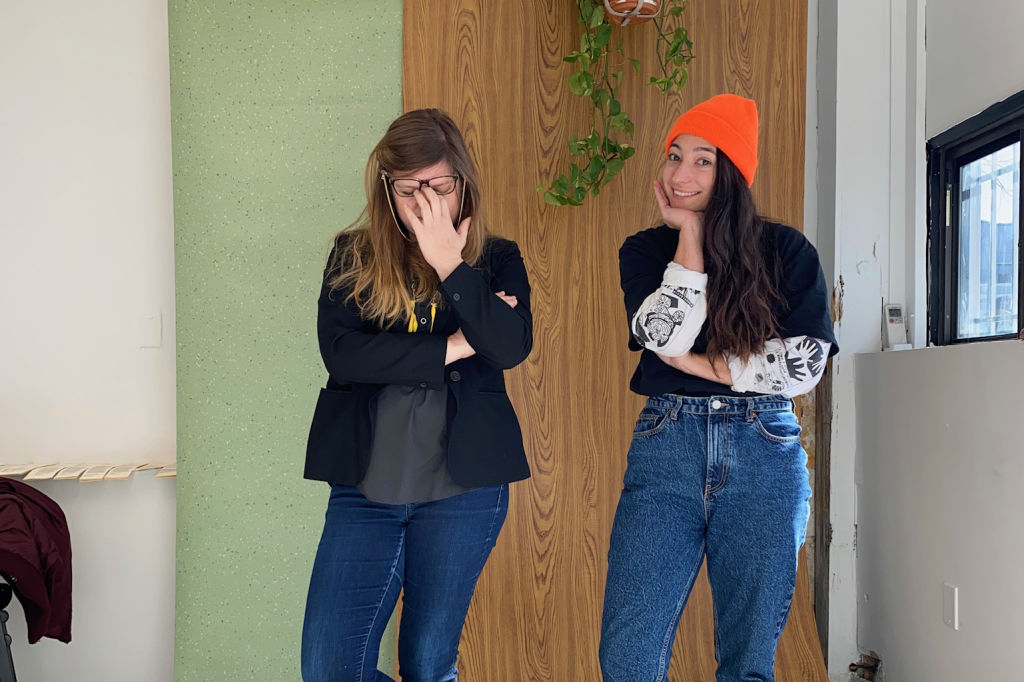Culture
 Nancy Daly and Rex Delafkaran. Photo courtesy of subjects.
Nancy Daly and Rex Delafkaran. Photo courtesy of subjects.
The Co-Founders of but, also Evoke Off-The-Rails Energy
July 10, 2021 @ 10:00am
Nancy Daly and Rex Delafkaran, the duo behind but, also, are purveyors of artist made products and believers in showing up as your most authentic self. They also aren’t shy about setting off an outfit with a signature oversized T-shirt.
District Fray: What D.C. style means to you
Rex Delafkaran and Nancy Daly: Though we know there are a lot of people doing very interesting work in D.C. in terms of design and marketing, we have found D.C. leans heavily toward a buttoned-up aesthetic — and there is a prioritizing of that aesthetic as the only way to be professional. We prioritize authenticity in our aesthetics and want to lead by example [by] showing people you can both be a professional expert and authentic to your personality and where you’re coming from. Our personality is a little goofy. You don’t know until you try it, and we tried it and it’s going pretty well.
Style icon and/or inspiration
Rex Delafkaran: My style icon falls somewhere between Leonardo DiCaprio in “Romeo + Juliet,” a business casual man from 1994, and Zoë Kravitz.
Nancy Daly: Rex. We all know she’s the only reason I’m being included in this interview.
Wardrobe essential
Delafkaran: An oversized-to-you T-shirt. I think a good big shirt can turn a day around. I always feel like I’m getting away with something [when I wear one]. Also, tall socks.
Daly: A one-piece item that seems like effort but is actually none. [I’m a fan of] low effort, high impact.
Both: But, also a “but, also” shirt (available online).
Personal style
Delafkaran: I apply a big-small, small-big strategy — never small-small and sometimes big-big. I want to be perceived as having no body, but also hot.
Daly: A trendy, young grandpa: lots of cardigans, collared shirts [and] glasses, but also skinny jeans.
Both: With but, also’s aesthetic, we aim to encapsulate our off-the-rails energy, the broadening of what a gallery/store space can be and what an artist-run business can look like. We want to be less visually alienating than other gallery spaces so that people outside the art world feel more welcome. And really, an entire aesthetic has come out of that approach.







